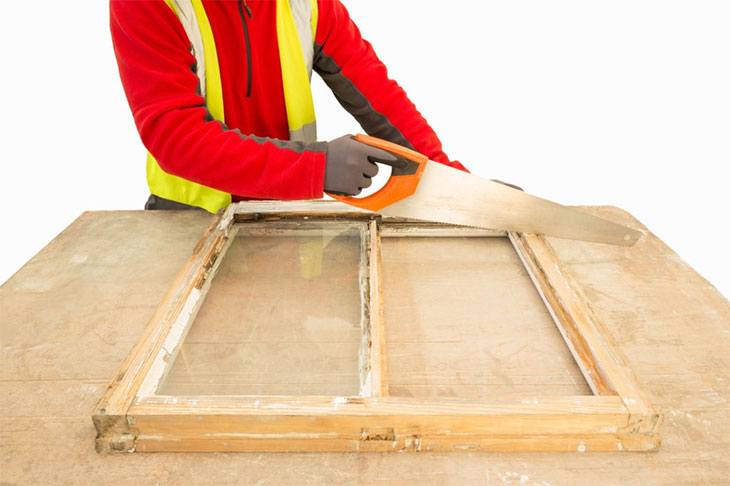Sash windows have served many homes since they were invented in the 17th century. They acquired prominence in Victorian times, due to their simplicity, functionality and antiquated beauty but have waned in popularity in the last 50 years or so.
Sash windows are now enjoying resurgence thanks to people being more enlightened on their aesthetic value. As a result a lot of restoration work is currently being undertaken to return old buildings to their original form incorporating sash windows as vital visual elements.
By the time you’re through reading this article on how to make a sash window, you should have minimal problems installing one for your home, and hopefully you shall also enjoy the learning process.
More...
How to make sash window explained

Sashes are the movable parts of the window that give it its distinct name. These comprise the outer framework that holds the glass panes in place known as stiles. The panes on their part are vertically separated from one another by molded pieces of wood called sash bars, and horizontally by muntins.
Most windows with this design are referred to as sash windows, but technically, only windows with a vertically (or horizontally- as is the case with Yorkshire light windows) sliding operation fit this description.
The process of making sash window
1. Materials used
Sash window frames are usually made from timber and are preferred by traditionalists for their longevity. However, PVCu can also be used a cheaper alternative. They also have the advantage of availability in a wide range of colors including an artificial wood finish look.
For our purposes in this article we shall restrict ourselves to frames made from timber as these are more workable with regular do it yourself tools compared to plastic.
2. Cutting the timber frames
- The sash bars, muntins, stiles and rails (used to support the whole window set) should be cut from 1 & 3/8 inch thick stock.
- The stiles, being the outer support of the glazed window, should be cut with the height of the full window in mind. Therefore if the window is – for example -24 inches, the stile will be of the same length. The rail length should on its part have an allowance for the tenon joints (usually 1 & 1/4 inch) as well as a ½ inch for the coped joint.
- The muntins and sash bar should be cut ¾ inches wide and their lengths also given an allowance for the accompanying tenons.
3. Marking
Make the necessary markings on the face side of your cut materials since the inner side of your window is the most viewed, and you want to avoid defacing it.
Mark the outer edges of the rails and stiles as well, indicating where they intersect with the sash bar and muntins, while also taking care to mark the intersection between the sash bar and the muntin.
4. Cutting using a table saw

- The tenons on both sides of the rails, muntins and sash bars are cut to 1&¼inch length using a dado set installed in the table saw you will use. The set is adjusted to make a 5⁄8 inch-deep groove.
- With one edge against a miter gauge and one end against the fence, position your piece of wood face down on the table saw, cutting the groove with several passes over the saw.
- For the ¼ inch thick tenons, use a 1⁄8 inch spacer placed between the work piece and table saw top, repeating the procedure above to make the necessary cut.
- Cut the tenons to the correct thickness by making multiple cuts using the dado set adjusted to 5⁄8 inch depth as before.
5. Coping the Work Pieces

- Once you have installed the coping bit in your router table, place the rail on the table face down, adjusting the cop bit to the point where tip of its cutters make contact with the tenon. Adjust the fence to allow the coping bit to make a 1⁄4 inch cut past the tenon shoulder; do this for the rails, muntins and sash bar tenons.
- On the stiles mark out the position where the mortises will be cut, using the tenon that best interlinks with it. Using the rail placed on top of the stile, mark the mortise width and do the same for the mortises that hold the muntin and sash bar tenons.
- Make an allowance in the mortises 3⁄8 inch deeper than the length of the tenons so that the mortise in the sash bar goes through it completely.
- Once you have installed the profile bit in the router table, place the rails and stiles face down and mold the inner edges of the stiles and rails.
- Repeat the operation for the muntins and sash bar using a secondary fence clamped onto the router table. The fence should be 1&1⁄4 inch thick, positioned so the muntins and sash bar fit neatly between it and the main fence.
- Mold both edges of the muntins and sash bar. You may employ some push sticks to enable you pass the stock between the fences.
6. Finishing
You can finish off the outer end of the stile mortises using a fine-toothed saw. You may now cut the muntin tenons that intersect the sash bar to 1⁄8 inch long.
Try fitting the wooden pieces together at first without the use of glue to check if they fit correctly. Once satisfied, apply glue to all the interlocking surfaces and clamp together.
Make one more check to ensure the joints are square enough.
7. Glazing

Install the glass panes in the rear face of the sash window, which should be rabetted.
There should be a 1⁄8 inch allowance on the rabbeted openings so that the pane can fit correctly. Press the glazing against the frame to seal the glass tightly against it.
Ensure the glass pane is first held in place by mounting with putty or nailed down strips of wood (quarter round size). You can heat the putty slightly with a heat gun if the glazing is cold to make it more malleable.
It is also advisable to clean the window pane first before installing.
8. Priming and painting
Sash windows can take up to a fortnight before they are ready for priming and painting. The reason is that the glazing has to first undergo a slow process of hardening and oxidation before it is ready.
When painting the primer and paint need to overlap the glass pane in order obtain a good seal.
The best way to achieve this is paint closely to the glass using a small paintbrush and immediately afterwards wipe off using a paper towel.
